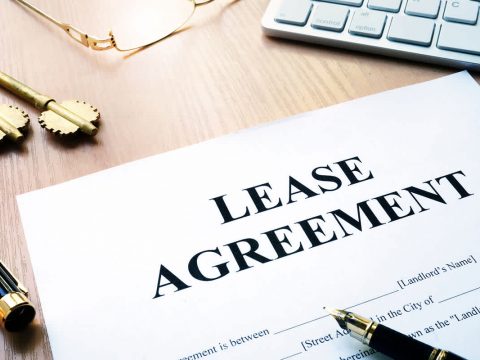- Have any questions?
- (850) 713-4866
- info@shorefrontrestorations.com
Generating Cash From Your Home Equity for a Business or Real Estate Investment

First Time Selling Your House? Read This!
February 1, 2021
House Too Big and Looking To Downsize?
February 1, 2021Some may argue that the uncertainty brought by the pandemic means that we should stay put and avoid making investments. However, there are those, like you who’ve clicked on this article, who believe there’s no point in waiting because uncertainty never goes away in the first place.
If your current career or business seems to be falling apart, you might want to consider jumping out of the ship before you sink with it or try to create a safety net for yourself, at least. Some of the things you might have come up with are starting a new line of business or finally get into real estate. However, smashing the piggy bank is definitely not the best idea here. How do you get those funds?
There’s an opportunity that might have already been in your hands this entire time. Let’s talk about your equity.
Your Equity
Simply put, your equity is the value of your property minus how much you have owing on your mortgage. If you bought a house worth $500,000 that you took a mortgage of $300,000 for, then that means you have $200,000 in equity.
What’s the big deal with your equity in this case, then? Well, it tells you how much of the house you already “own”, therefore showing how much you can “exchange” for cash. In the following sections, we’ll be exploring two different options to utilize your equity to get the funds you need to get started on your business or real estate venture.
Home Equity Line of Credit (HELOC)
A Home Equity Line of Credit might sound like a mouthful, but that just means turning your equity into something like a credit card with gigantic limit. As the analogy suggests, this is different from Home Equity Loans, which allows you to borrow an amount based on your equity. A HELOC lets you borrow over and over again, either through checks, transfers, or even a credit card you might already have in possession. As long as you have good credit, it’s fairly easy to get one.
Here’s how it works. The lender you choose has a specific combined loan-to-value (CLTV) ratio which they’ll use to measure how much they could lend you. Let’s use the example from earlier. If you have a property worth $500,000 with a mortgage of $300,000 remaining, and the maximum CLTV of your lender is 80%, that means you could get $100,000 as the “limit” for your HELOC. If follows the formula written below:
The amount you could potentially borrow = (Property Value x CLTV) – Mortgage Balance
So what about payments? Well, HELOCs have two phases. The first one usually lasts for ten years where you can draw as much as you need and only make interest payments. It’s the next ten to twenty years that are reserved for repayments on the amount borrowed with interest. Take note that HELOCs commonly start with low interest rates but are generally variable rates, which means they may increase over time.
Interests on your HELOC may be tax-deductible if you’re using the funds to purchase a rental property, build a house, or do renovations. If you’re looking to do these, then you’re in luck. But that doesn’t mean that you should only use these funds for real estate concerns. This is also perfect for kickstarting a business or improving on a current one that you already have. You could look at the ten-year drawing period as a time table for your business to be at a point of self-sufficiency.
Do take note that with HELOCs, you’re borrowing using the property as collateral. The lender will be putting a second lien, so you do face the risk of losing the property if you aren’t able to keep up with the payments. If you’re not comfortable with paying higher interest rates, you might want to avoid this. Don’t worry, there’s another path you could take.
Cash-Out Refinance
You might have heard of refinancing before, and cash-out refinancing works the same way, just with a cash-out (as the name suggests). To put it simply, cash-out refinances mean you’ll be borrowing a part of the value of the property, use those funds to pay off the existing mortgage, then spend whatever is left for whatever you want!
Using the same example from earlier and if the lender only allows us to borrow 80% of home value, as much $400,000 (from the $500,000) can be borrowed. This amount has to pay off the $300,000 owing on the mortgage first. That leaves us with $100,000 to use. If you have outstanding credit, you may get the privilege to borrow more than usual, depending on the lender.
This method does come with a few drawbacks. You’ll usually get lower interest rates than HELOCs and even your first mortgage, but you’ll end up paying more interest over time and also cover the closing costs from the first mortgage. Also, like HELOCs, lenders also put a lien for cash-out refinances. But then again, the ease of acquiring these funds may be worth it, especially if you’re investing them to earn more in the future anyway.
Selling Your Property Renovated or As-Is
If you are using the funds for real estate purposes, using either a HELOC or a cash-out refinance may be the sensible move for you because the interests could potentially be tax-deductible. But even without that benefit, flipping a home, if done right, generates significant revenue.
Before you jump for joy, you still need to put in the effort of seeing things through. Renovating the house is one thing, but selling is another. We recommend that you work with a trusted real estate agent if you’re not familiar with how the selling process works. Should you fall into a serious issue, the loan you took may eventually set you back financially.
If this all seems too bothersome and just want to get things done quickly. You could find real estate investors that have a good standing in the area. After contacting them, you could get a quote as soon as possible. No need for you to apply for another loan and renovate!
Don’t know where to start looking? We from Shorefront Investments would be happy to help. Just call us or send us a message. Want us to contact you instead? Not a problem! Just fill out the “Sell My House” form and we’ll get in touch.
Disclaimer: The statements provided above do not cover all possible scenarios that one person may be experiencing. In addition, the numbers in your area may be different because of various economic factors. It’s always best to do some research or consult with an accountant, your local real estate agent, financial adviser first before making any major decisions.




